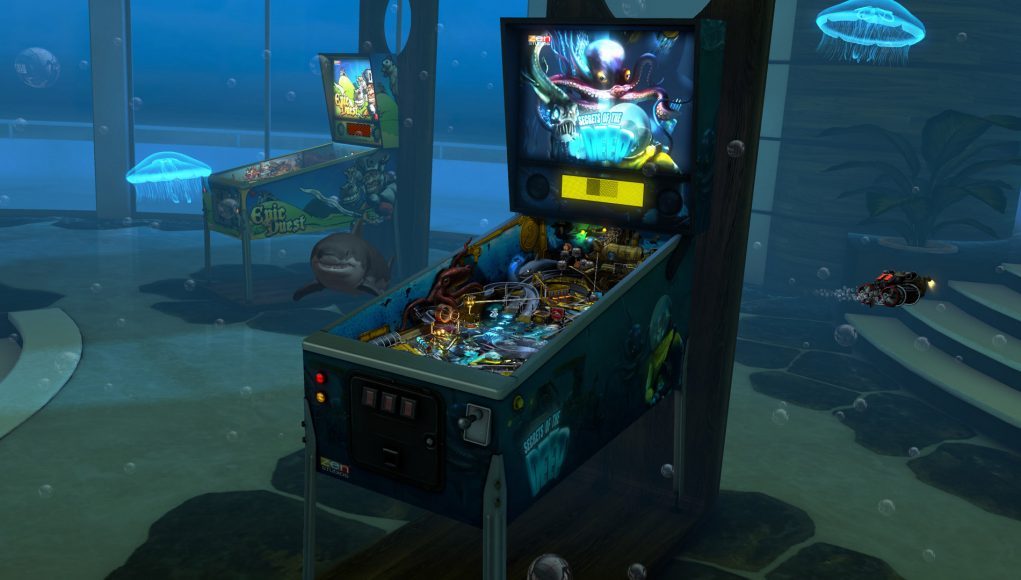Pinball FX2 VR arrives tomorrow on Vive and PlayStation VR along with a popular new The Walking Dead themed machine. Originally a launch title for the Oculus Rift, the game will now be available on all three major VR platforms. We take a look at Pinball FX2 VR on the HTC Vive.
Pinball FX2 VR Details:
Official Site
Developer: Zen Studios
Available On: Oculus Home (Rift), SteamVR (Vive, OSVR HDK), PlayStation VR
Reviewed On: HTC Vive
Release Date: March 28th, 2016 (Rift), November 29th (Vive, PlayStation VR)
Having developed pinball games for almost a decade, with Pinball FX and Zen Pinball appearing on multiple previous and current-gen consoles, several mobile platforms and PC, developer Zen Studios was in an ideal position to bring their particular brand of pinball to virtual reality. Pinball FX2 originally launched on Xbox 360 in 2010, saw major improvements on Xbox One, and made the jump to VR in the form of Pinball FX2 VR on the Oculus Rift in March. No longer exclusive to Oculus, the game moves to the Vive on SteamVR and to PSVR, along with the first DLC pack of five extra tables, and introduces a new table based on Telltale’s The Walking Dead series (first seen in 2014).
Gameplay
Believe it or not, it’s pretty much pinball. This involves smacking a steel ball around with a pair of flippers, trying to score as many points as possible, avoiding the drain at the bottom. You get three balls, plus the chance to earn more during the game. Each machine has a unique design, with combinations of ramps, bumpers, additional flippers, and so on. You score points by hitting targets, rolling across ramps, or completing combinations of targets and routes. For any hope of a high score, you’ll need to become proficient at hitting specific targets repeatedly in order to advance the ‘mode’. With just three machines provided with the base game, the expectation is to become intimately familiar with each, through hours of practice. Everyone should find some immediate satisfaction from randomly keeping the ball ‘alive’, but as with the real thing, it’s only through learning a machine’s layout and quirks over time that the game becomes truly rewarding.
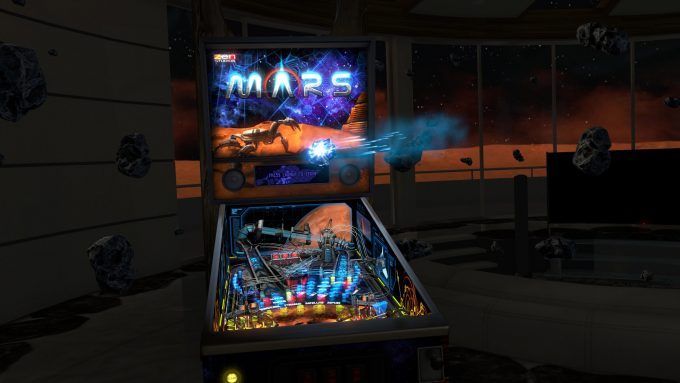 While Pinball FX2 VR is considered to have very realistic ball physics in terms of impacts and inertia, the design of the tables (for instance the generous angle of the flippers and the positioning of the ‘outlanes’) is such that each round tends to be more forgiving than a real machine and lasts longer; you’re less likely to drain the ball compared to the real thing. In addition, game is not afraid to introduce supernatural or unrealistic elements to the tables to enhance the fun. The result is a pinball simulation that leans towards accessibility, while remaining rewarding in the hands of an expert.
While Pinball FX2 VR is considered to have very realistic ball physics in terms of impacts and inertia, the design of the tables (for instance the generous angle of the flippers and the positioning of the ‘outlanes’) is such that each round tends to be more forgiving than a real machine and lasts longer; you’re less likely to drain the ball compared to the real thing. In addition, game is not afraid to introduce supernatural or unrealistic elements to the tables to enhance the fun. The result is a pinball simulation that leans towards accessibility, while remaining rewarding in the hands of an expert.
You’ll quickly find a table that suits you best, and it’s easy to become hooked to Pinball FX2 VR. But from a studio renowned for its licensed pinball machine designs, it’s disappointing that The Walking Dead table is the only licensed table available right now. With the three standard tables, five from the first DLC pack and The Walking Dead table, this is still significantly short of the 70+ tables available for the non-VR version of Pinball FX2. Understandable to some extent, as each table isn’t just optimised for VR, it is re-worked and enhanced, but there’s a big discrepancy here.
Immersion
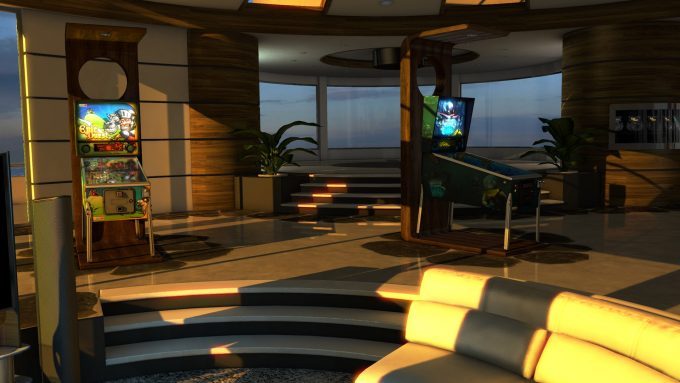 As with most conversions, bringing Pinball FX2 VR into VR delivers a truckload of additional immersion over the original game. Developers effectively get this for ‘free’ due to the nature of virtual reality, but it is a measure of a good VR implementation that extra steps were taken to enhance the experience further. For Pinball FX2 VR, that includes creating an attractive living space, reworking some of the table elements and surrounding the player with themed visual effects in a spectacular manner that can only be achieved in VR.
As with most conversions, bringing Pinball FX2 VR into VR delivers a truckload of additional immersion over the original game. Developers effectively get this for ‘free’ due to the nature of virtual reality, but it is a measure of a good VR implementation that extra steps were taken to enhance the experience further. For Pinball FX2 VR, that includes creating an attractive living space, reworking some of the table elements and surrounding the player with themed visual effects in a spectacular manner that can only be achieved in VR.
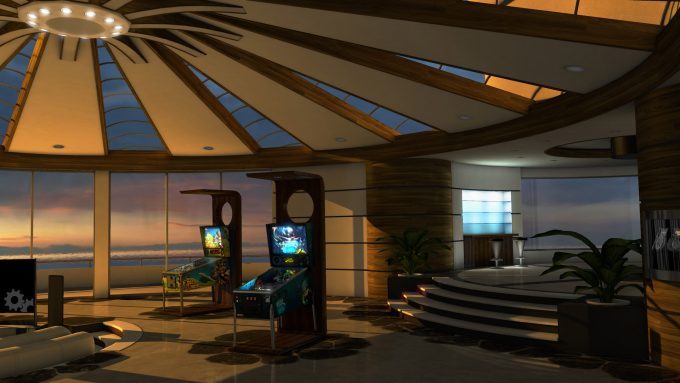 You’ll find the game’s tables inside a ‘beachside mansion’, a semi-futuristic, semi-retro interior that is intelligently laid-out, although it’s a shame that a freeform teleportation system isn’t available, and you’re stuck moving between fixed nodes. As you launch a game, the mood of the space adjusts to suit the design of the particular machine you’ve picked, but it remains apparent that you haven’t left the living space entirely, which creates a more cohesive experience as you switch tables. I’d like to see some customisation of the room beyond choosing between three machines, or perhaps even several alternative play areas, for instance a ‘retro arcade’ environment.
You’ll find the game’s tables inside a ‘beachside mansion’, a semi-futuristic, semi-retro interior that is intelligently laid-out, although it’s a shame that a freeform teleportation system isn’t available, and you’re stuck moving between fixed nodes. As you launch a game, the mood of the space adjusts to suit the design of the particular machine you’ve picked, but it remains apparent that you haven’t left the living space entirely, which creates a more cohesive experience as you switch tables. I’d like to see some customisation of the room beyond choosing between three machines, or perhaps even several alternative play areas, for instance a ‘retro arcade’ environment.
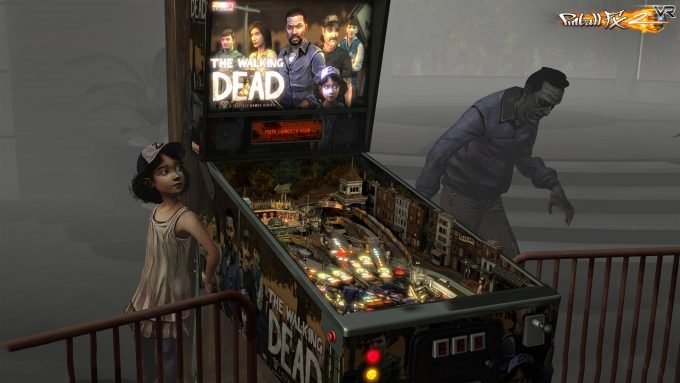 The Walking Dead table (launching on the 29th as DLC for all versions of the game) in particular impresses with a convincingly spooky atmosphere of a zombie adventure, using the same ‘hand-drawn’ art style and original voice actors from Telltale’s popular series, with a chapter-based progression that is surprisingly effective, all contained within a pinball game.
The Walking Dead table (launching on the 29th as DLC for all versions of the game) in particular impresses with a convincingly spooky atmosphere of a zombie adventure, using the same ‘hand-drawn’ art style and original voice actors from Telltale’s popular series, with a chapter-based progression that is surprisingly effective, all contained within a pinball game.
Every table has a few visual tricks that extend beyond reality, which can become jarring at times. In the case of the ‘Paranormal’ table, the passenger plane passing inches from your nose as it crash-lands just becomes irritating after several games. Pinball is a ‘just one more go’ type of game, and the last thing you want is a repeated irritation. In general however, the balance between visual flourishes and clean design is well balanced. The game could, perhaps, offer an option to disable the external animations for those who just want to concentrate on the machine.
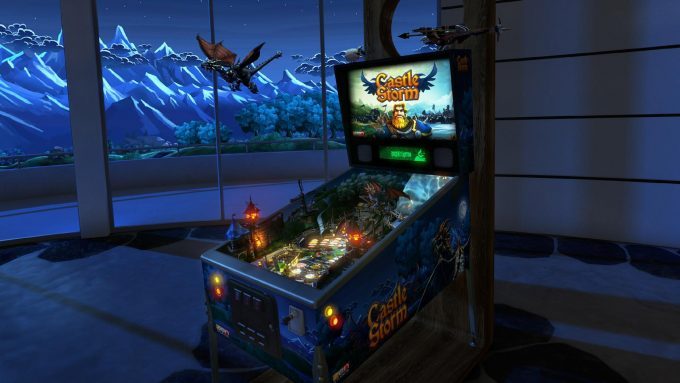 The original game introduced the each table’s detail with fly-by camera views; you won’t find that here in the Vive version, instead you can do your up close inspection by walking around the table and leaning towards it. As with most high-quality VR experiences, you’ll feel like you really need to walk around the machine as if it’s a physical object, and you’ll want to lean on the machine to take a closer look, when there’s nothing physically preventing you from simply clipping straight through it. And if you do, even though it feels odd, it’s a really neat way of seeing the table detail up close.
The original game introduced the each table’s detail with fly-by camera views; you won’t find that here in the Vive version, instead you can do your up close inspection by walking around the table and leaning towards it. As with most high-quality VR experiences, you’ll feel like you really need to walk around the machine as if it’s a physical object, and you’ll want to lean on the machine to take a closer look, when there’s nothing physically preventing you from simply clipping straight through it. And if you do, even though it feels odd, it’s a really neat way of seeing the table detail up close.
The best way to take immersion to the next level is with haptic feedback. Construct yourself a PinSim, and if you’re lined up just right, it will really feel like you’re interacting with a physical table. To reproduce some of the sensation, strapping Vive controllers (the triggers activate the flippers) either side of a table with the correct height and width can also deliver a pretty convincing feeling without much effort.
Comfort
I assumed this was going to be one of the less demanding scenarios for VR rendering, but Pinball FX2 VR turned out to be one of the clearest illustrations of the importance of high performance for VR gaming. The low hardware resolution of today’s VR headsets means that there is a significant difference in clarity even across the short distance from the front to the back of the table; it’s such a challenge to resolve the detail with this limited number of pixels.
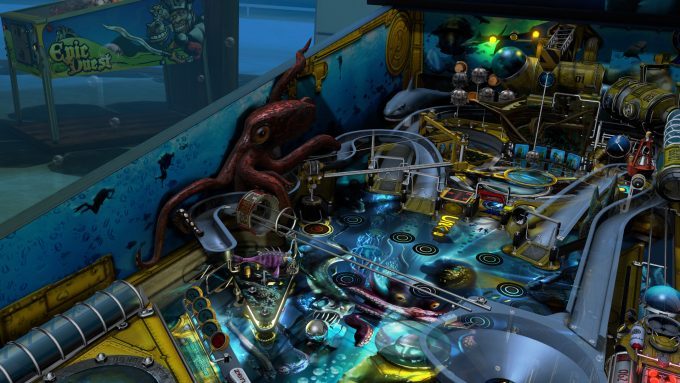 Stand at a typical viewing distance, and you’ll be missing much of the detail towards the back. As such, the difference between the multiple resolution options (with the very high settings performing super-sampling) is very obvious, and combined with up to 8x MSAA, the image quality that can be achieved with enough performance overhead is remarkable. Pinball seems to be one of the best illustrations of an image quality difference, as the table is full of intricate geometry (the wire ramps show aliasing severely) but it is very demanding. You’ll need a serious GPU in order to hold 90 FPS on high settings, which again is particularly significant in pinball.
Stand at a typical viewing distance, and you’ll be missing much of the detail towards the back. As such, the difference between the multiple resolution options (with the very high settings performing super-sampling) is very obvious, and combined with up to 8x MSAA, the image quality that can be achieved with enough performance overhead is remarkable. Pinball seems to be one of the best illustrations of an image quality difference, as the table is full of intricate geometry (the wire ramps show aliasing severely) but it is very demanding. You’ll need a serious GPU in order to hold 90 FPS on high settings, which again is particularly significant in pinball.
Thanks to asynchronous reprojection, the Vive seemed smooth as I scanned around the table on the highest settings, but the ball movement had become a juddering mess, which was affecting the all-important physics and timing. In fact, it was only at very low settings that the motion appeared to hold 90 FPS in all situations, so if you want the very best experience you’ll need a top-end GPU.
The intention is to play standing up, as you would in front of a real table. It’s very convincing, and hard to play it any other way once you’ve tried it, but the problem is that you’re constantly tilting your head down. And in order to get the best image from your VR headset, it’s best to look through the centre of the lenses, so you’re likely to have a slightly more tilted head compared to playing on a real table, which can move the lenses out of their sweet spot. On top of that, you’re wearing a headset, and the case of the Vive, a particularly front-heavy one, which adds a considerable strain on your neck. I began to feel some discomfort after just half an hour, which admittedly is longer than I’ve ever stared at a pinball table in reality.
It’s not all bad news on the comfort front. If you hit the ‘recenter’ button, it assumes you are standing and positions the table at a sensible distance below you. This means that unlike the real thing, players of any height can enjoy the game to its full potential. You can also use the ‘recenter’ button to force a different perspective, hitting the button from one position and then moving to play it in another, so that the table ends up closer to you if you’d prefer.
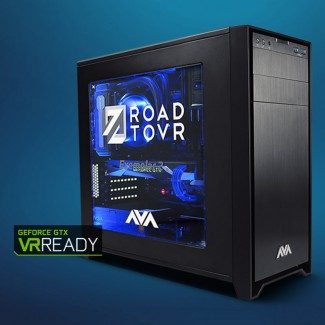 We partnered with AVA Direct to create the Exemplar 2 Ultimate, our high-end VR hardware reference point against which we perform our tests and reviews. Exemplar 2 is designed to push virtual reality experiences above and beyond what’s possible with systems built to lesser recommended VR specifications.
We partnered with AVA Direct to create the Exemplar 2 Ultimate, our high-end VR hardware reference point against which we perform our tests and reviews. Exemplar 2 is designed to push virtual reality experiences above and beyond what’s possible with systems built to lesser recommended VR specifications.

